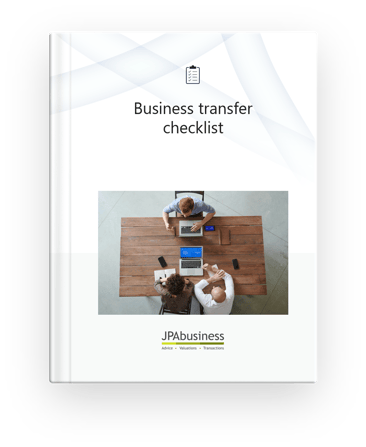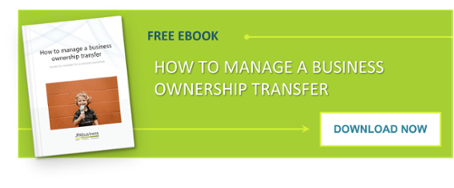In this blog James examines the first two categories in the JPAbusiness Business Transfer Checklist – Employees and Financial.
Employees
There are a number of business transfer issues related to employee management and two of the most important are:
- Documentation
- Communication
Documentation
It is important for a new owner to ensure the tenure of employees staying within the business. To do that the relevant documents must be provided to employees and duly executed in the lead-up to completion.
The actual documentation required will depend on what type of sale is occurring. For instance, if the shares in a company are being sold then the employees will usually transfer under their existing employment agreements, provided there is no requirement for these agreements to be refined as part of the sale terms.
However, if the transaction is a going concern asset sale, the vendor is effectively terminating the employment of those people, and the purchaser will need to lodge a fresh letter of employment or employment contract with each employee.
Sometimes we find the employees of a business don’t have any employment instrument in place – no contract and no letter – and have been employed on the basis of a verbal agreement. A purchaser coming in may want to formalise that situation.
In this situation there needs to be correct documentation in place on day one of the new business so, again, the relevant documents must be provided to the employees and completed prior to settlement.
Communication
For employees moving to the new ownership, as well as employees not required by the new owner, there needs to be a clear communication process.
Our vendors are often quite sensitive about when they communicate to their staff about a business sale. Some communicate very early on – even before they have a purchaser in mind. Others leave it until very late in the process when they have binding contracts in place.
There is no right or wrong, but the important thing is that once they decide the time is right to share the news with employees they do so openly.
They need to be transparent with their employees about what they can expect from the process, introduce them to the purchaser and involve the purchaser in discussions with employees (in a structured way) leading up to settlement. This will keep the employees in the loop regarding the transfer process and reduce nervousness about the new working environment.
Obviously change is challenging for everyone, but there needs to be a warm handover of employees. The last thing both a vendor and purchaser wants is unsettled and unproductive employees.
Financial
There are four main issues to consider in this category:
- Employee entitlements
- Customer accounts
- Work in progress
- Insurance
Employee entitlements
It is important for both the vendor and purchaser to have a clear understanding of the entitlements associated with each employee who is either leaving the business upon settlement, or going forward with the new ownership.
Entitlements are usually to the vendor’s account, so they’re paid by the vendor up to completion or settlement, or the value is adjusted from the settlement proceeds.
Vendors will need to inform their solicitors of the amount of annual leave, sick leave, long service leave and the like that has been accrued by each employee. There is then a financial process under which those either get paid out or adjusted from the purchase price, or both.
If you as a vendor have a good solicitor putting the contract together for you, they will ask for the entitlements owed to staff at that point. You will then to update them at the completion date, once it is identified.
Customer accounts
Another financial issue is the payment of accounts by customers.
The last thing we want to see post-completion is money paid against invoices you have issued as a vendor leading up to completion, going to the purchaser’s account.
Equally the last thing we want to see is the first month of invoices issued by the purchaser being paid to the vendor’s account.
I have experienced situations of how not to do it, where that has happened for a period of six or 12 months post a completed sale on a business. It is disastrous because there is money changing hands behind the scenes, going backwards and forwards between accounts, and it takes a lot of work to unpick it all and keep track.
To avoid this situation the vendor and purchaser need to work closely, ahead of the completion date, to decide how you’re going to communicate the new arrangements to the business’s customers.
That may require repeated communication, both in writing and by telephone, to ensure customers appreciate there is a new account into which they must pay their bills after a certain date.
Work in progress
Where a business has jobs and projects that may stretch across the completion date, work in progress will need to be assessed and determined upon completion.
Unless a sale contract determines otherwise, work in progress for a job or project that runs through the sale date needs to be fairly apportioned to the vendor and purchaser commensurate to the amount of work each party has or will have to expend on the project.
There can be significant dollars involved in work in progress and normally these are adjusted in the favour of either the purchaser or vendor, depending on the status of the individual project or job.
A good solicitor and broker will assist you as a vendor develop a work-in-progress schedule to be assessed upon completion, so a fair apportionment can be agreed between the parties.
Insurance
As a vendor you want to ensure you’re well and truly covered by insurances – business, plant and equipment, and building – right through to completion.
It’s equally important to ensure the purchaser is covered right from completion, so no gap can occur which could give cause to later dispute if something adverse did happen during that handover period.
A sound strategy as a vendor is to ensure there is a modest insurance overlap, just to cover any contingencies.


